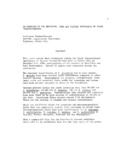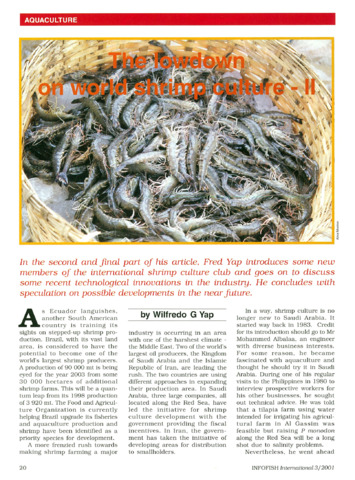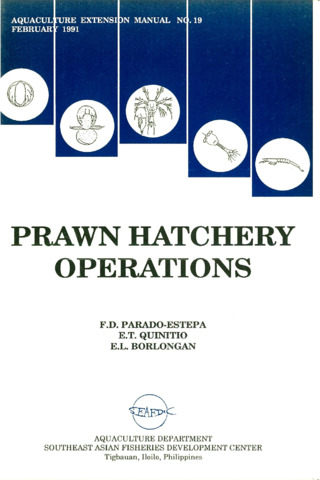| dc.contributor.author | Rajyalakshmi, T. | |
| dc.contributor.author | Pillai, S.M. | |
| dc.contributor.author | Ravichandran, P. | |
| dc.contributor.editor | Taki, Yasuhiko | |
| dc.contributor.editor | Primavera, Jurgenne H. | |
| dc.contributor.editor | Llobrera, Jose A. | |
| dc.date.accessioned | 2012-04-20T03:41:13Z | |
| dc.date.available | 2012-04-20T03:41:13Z | |
| dc.date.issued | 1985 | |
| dc.identifier.citation | Rajyalakshmi, T., Pillai, S. M., & Ravichandran, P. (1985). The biology of Penaeus monodon in the capture fisheries of Orissa coast, India in the context of occurrence of natural broodstock (Abstract only). In Taki Y., Primavera J.H. and Llobrera J.A. (Eds.). Proceedings of the First International Conference on the Culture of Penaeid Prawns/Shrimps, 4-7 December 1984, Iloilo City, Philippines (p. 175). Iloilo City, Philippines: Aquaculture Department, Southeast Asian Fisheries Development Center. | en |
| dc.identifier.isbn | 9718511008 | |
| dc.identifier.uri | http://hdl.handle.net/10862/922 | |
| dc.description | Abstract only. | en |
| dc.description.abstract | The tiger prawn of India, Penaeus monodon Fabricius has a differential distribution in the two coasts of India. Density is high in the northeastern part of the Bay of Bengal gradually declining towards the mid-east and becoming quite scarce towards the south. On the west coast, the distribution is more sparse and limited to a few months, off Bombay. The only known inshore areas of capture fisheries are the Godavari estuarine system, and the lagoons off Orissa at Chilka and Madras at Pulicat. The only known offshore capture exists off the Orissa coast at Paradip and Puri extending south to Visakhapatnam and Kakinada Bay. The greatest production comes off the brackishwater "bheri" (wild culture) system in the extensive "sunderbans" of West Bengal on the northeast where millions of seed recruited to the Hooghly estuarine complex are drawn in along with tidal waters and "cultured." The distribution profoundly affects the maturity, breeding and recruitment of this highly euryhaline species.
The distribution can be related to the cyclic currents in the Bay of Bengal which have a profound effect on the salinity and temperature profile. It can also be related to the immense quantity of freshwater inflow from the mighty Hooghly-Matlah-Roopnarayan Padma estuarine complex at the head of the Bay and the other major riverine estuaries on the mid-east coast viz., the Mahanadi, Godavari and Krishna. The pattern of circulation and estuarine flows is such that it might also positively influence the food distribution, both live and detrital, in this region.
Ripe (gravid) and ripening females and males of P. monodon in the size range of 100-250 g are captured off Paradip coast in the not very deep (30-40 m) waters where coastal trawlers operate, from October through April corresponding to the post-monsoon stability in the water movement and the increasing salinity. This offers a good augury for setting up hatcheries in adjacent zones using naturally mature forms. Catch records from one major freezing plant are presented to indicate the density and distribution of the species at the Paradip-Puri coast. | en |
| dc.language.iso | en | en |
| dc.publisher | Aquaculture Department, Southeast Asian Fisheries Development Center | en |
| dc.subject | Biological data | en |
| dc.subject | Brood stock | en |
| dc.subject | Shrimp fisheries | en |
| dc.subject | Penaeus monodon | en |
| dc.subject | India | en |
| dc.title | The biology of Penaeus monodon in the capture fisheries off orissa coast, India in the context of occurrence of natural broodstock | en |
| dc.type | Conference poster | en |
| dc.citation.spage | 175 | |
| dc.citation.conferenceTitle | Proceedings of the First International Conference on the Culture of Penaeid Prawns/Shrimps, 4-7 December 1984, Iloilo City, Philippines | en |
| dc.subject.scientificName | Penaeus monodon | |



